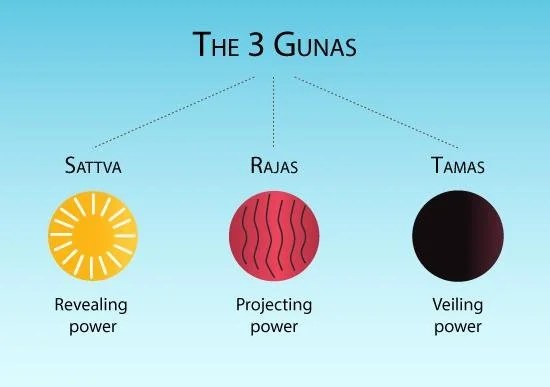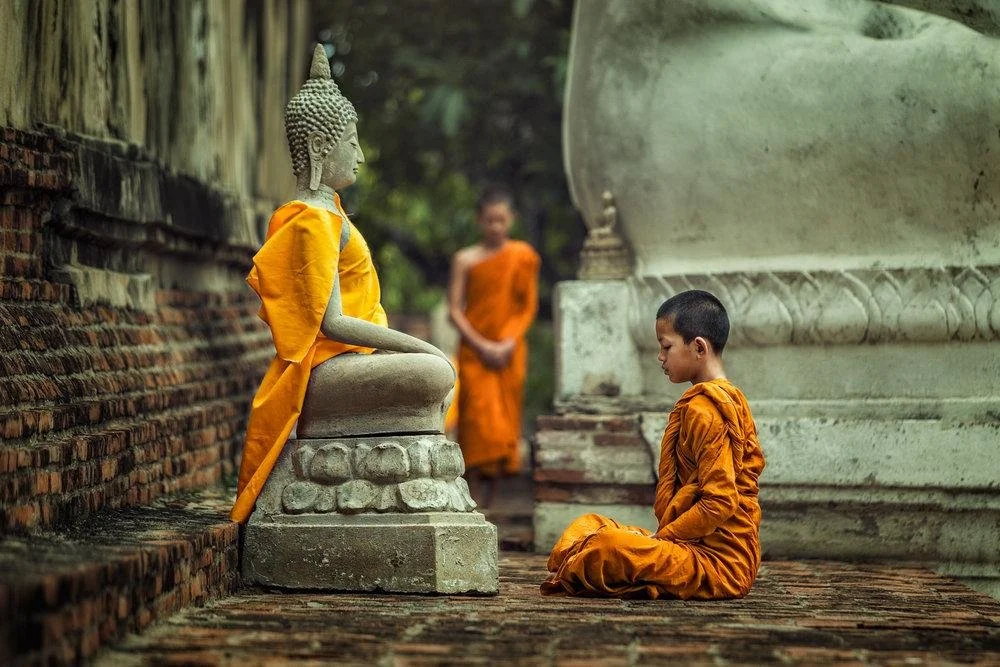The process is not easy - it requires a kind of preparation that is uncanny and far-reaching. It involves a gradual shedding of old mental patterns and assumptions, allowing for a new order of reality to emerge. The practice of Yamas and Niyamas brings a purification of the self that is not limited to the removal of impurities but encompasses the spontaneous revelation of a greater truth within. This purification leads to an expansion of our personality and a deeper connection with the universal essence of life.
As one begins to embody these principles, a natural integration of the remaining limbs of yoga unfolds, leading towards concentration (Dharana), meditation (Dhyana), and ultimately, the union (Samadhi) with the infinite reality. The Yamas and Niyamas are, therefore, the bedrock of the entire yogic path, grounding us in a practice that touches every dimension of our being - physical, mental, emotional, and spiritual.
Embracing these practices invites us to live yoga, not just as an external discipline, but as an intrinsic, lived experience that transforms how we perceive ourselves and the world around us. Through sustained and sincere practice, the inner light of knowledge begins to shine, illuminating the path to our highest potential and the realization of our true self.
Yamas – Our Attitude to People Around Us
1. Ahimsa (Nonviolence):
The essence of ahimsa goes beyond refraining from physical violence. It is about eradicating all forms of aggression, dislike, or judgment - both external and internal. Even the subtle urge to dislike someone is a form of violence (himsa), because it comes from a deep-seated animosity within us. True ahimsa means reaching a state where we naturally feel love and empathy towards all beings, and no trace of hostility or selfishness remains. This state has a transformative impact on the environment around us. People, animals, and even nature feel this absence of hostility and respond with peace and harmony. Practicing ahimsa requires a deep cleansing of selfish tendencies and overcoming our natural ego-driven impulses that make us see others as separate or inferior. The true mastery of ahimsa can change our very aura, making even wild animals or hostile people calm in our presence.
Example: You’re in a heated discussion with a colleague at work. Practicing ahimsa means taking a moment to pause and listen deeply instead of reacting with hurtful words or judgments. Instead of thinking, “They never understand me,” you might choose to consider, “We’re both passionate about this project. What would happen if I tried to see their perspective?” This approach reduces internal conflict and helps foster a more compassionate atmosphere, even when disagreements arise.
2. Satya (Truthfulness):
Satya is the practice of aligning our words, thoughts, and actions with reality. It is more than just not telling lies. It involves a dedication to living in a way where there is complete congruence between what we say and what truly is. This level of truthfulness creates a powerful connection between us and the world, nature, such that our words start to manifest in reality. For those who are firmly established in truth, their words carry weight and become reality because they are aligned with the natural order. Our thoughts are powerful forces. When we cultivate purity in our thoughts and words, they have the potential to materialize as true, demonstrating the harmony between our inner state and the external world. Such truthfulness requires that we not only speak the truth but also reflect truthfulness in our very being.
Example: You’ve agreed to meet a friend for lunch but are exhausted from a long week. Instead of making an excuse or forcing yourself to go, practicing satya could mean being honest with your friend: “I’m feeling really worn out and I’d like to reschedule so I can show up fully present when we meet.” This level of transparency and self-honesty can deepen trust and understanding in relationships, as it shows respect for both your own needs and those of others.
3. Asteya (Non-stealing):
Asteya is more than refraining from taking what does not belong to us. It involves overcoming the desire or impulse to appropriate anything - whether physically or mentally. The true essence of asteya lies in the subtle form of mental theft, such as longing for something we do not have or envying what others possess. This mental craving disrupts the natural flow of life and causes feelings of lack and inadequacy. Practicing asteya means finding contentment and recognizing the inherent value of all things, without discriminating or showing preference. When we let go of desires and do not seek to take or own, we naturally attract abundance. It is said that one who wants nothing will receive everything, as they no longer create barriers between themselves and the flow of wealth and prosperity in the universe.
Example: In a yoga class, you might find yourself admiring another student’s flexibility or strength and feeling a sense of envy. Practicing asteya would mean acknowledging those feelings without judgment and instead celebrating their success. You might think, “I’m glad they’ve worked so hard and are experiencing this progress,” rather than wishing to have what they have. This shifts the focus back to your own practice and growth, free from comparison.
4. Brahmacharya (Conservation of Energy):
Traditionally understood as celibacy, the concept of brahmacharya means conservation of all types of vital energy - physical, mental, and emotional. Brahmacharya calls for the withdrawal of our senses from indulgence and over-exertion, directing our energy inward rather than dissipating it outward. This practice results in a sense of strength and resilience, as our conserved energy begins to regenerate and flow back to us. When the senses are not fixated on external objects, a reversal of energy happens: instead of losing energy, we start attracting the energy of things around us. This can make us feel more focused, clear, and energized. Brahmacharya isn’t about suppression but about understanding the flow of energy and channelling it towards personal and spiritual growth. It creates a state of powerful presence and clarity.
Example: You notice that after scrolling through social media for an hour, you feel drained and restless. Practicing brahmacharya here means setting boundaries around screen time to conserve your mental energy for things that truly nourish you, like a mindful walk, reading, or meditation. This mindful management of energy helps you stay focused and grounded throughout the day.
5. Aparigraha (Non-hoarding or Non-possessiveness):
Aparigraha is the practice of letting go of possessiveness and attachment to material and mental accumulations. It means not holding onto things that are not necessary for our survival or spiritual progress. When we are free from the impulse to gather and own things, we release our mind from being tethered to our physical body and its desires. This freedom allows us to see our true nature and opens the door to understanding our past and future lives. Attachment to material things creates a sense of limitation and restricts our awareness to the present body and identity. Aparigraha teaches us to trust in life’s natural flow and abundance. By loosening our grip on possessions and desires, we begin to see beyond our individual self and connect with a more universal consciousness.
Example: You’re organizing your home and notice that you have many clothes you haven’t worn in years. Practicing aparigraha means donating or letting go of these items instead of holding onto them “just in case.” On a deeper level, it might mean releasing your identity as someone who “needs” certain types of things to feel worthy or successful. Letting go of physical and mental clutter makes space for new experiences and a sense of lightness in life.
Niyamas – The Personal Attitudes & Observances
1. Saucha (External & Internal Purity):
Saucha involves maintaining cleanliness both physically and mentally. This principle encourages us to keep our bodies, environment, and thoughts free from impurities. Understanding the transient and imperfect nature of the body can help us detach from excessive attachment to physical appearance and identity. When we keep ourselves pure, we see the body for what it truly is - a temporary vessel that requires constant maintenance. Realizing this, we become less obsessed with our bodies and less likely to project these obsessions onto others. Mental purity involves removing negative thoughts and emotions, creating a mind that is clear and focused, which prepares us for deeper states of meditation and self-understanding.
Example: At the end of the day, you might notice your mind is cluttered with unresolved thoughts and emotions. Practicing saucha could involve taking time to write in a journal, reflecting on the day, and clearing your mind before sleep. Similarly, saucha can be expressed through a daily ritual of cleaning your yoga mat or sacred space before practice, reinforcing a sense of respect and order.
2. Santosha (Contentment):
Santosha is the practice of being at peace with what we have and finding joy in the present moment. It is about cultivating a sense of satisfaction that is not dependent on external circumstances. Contentment arises when we stop seeking fulfilment from external sources and turn inward to find joy and peace within ourselves. Santosha helps us develop resilience and equanimity, allowing us to face life’s challenges without being swayed by external ups and downs.
Example: You see a friend sharing pictures from an exotic vacation on social media, and you start feeling envious. Practicing santosha means shifting your attention back to what is good in your own life. You might remind yourself, “I’m grateful for the meaningful conversations I had with friends this week and for the small joys of my everyday life.” This mindset reduces feelings of lack and cultivates inner peace, regardless of external situations.
3. Tapas (Discipline and Austerity):
Tapas means willingly accepting challenges and discomforts to purify and strengthen ourselves. It is the heat or fire that burns away impurities and old patterns, making way for new growth and clarity. Tapas can take the form of physical disciplines, such as fasting or intense exercise, or mental disciplines, like persevering through difficult emotions. Practicing tapas builds resilience, willpower, and determination, helping us transform our weaknesses into strengths.
Example: You want to get healthier, but you struggle to exercise consistently. Practicing tapas might mean committing to a short daily walk, even on days when you don’t feel like it. You may start with just 10 minutes and gradually increase the time as your endurance builds. By showing up for yourself despite resistance, you cultivate inner strength and resilience, building a habit that supports your long-term well-being.
4. Svadhyaya (Self-study and Reflection):
Svadhyaya is the study of sacred texts and the practice of self-reflection. It involves understanding our motivations, habits, and nature by turning our awareness inward. True self-study helps us see our mental and emotional patterns, uncovering both strengths and areas of growth. It creates a mirror through which we can view our true self beyond superficial identities, leading to greater self-awareness and personal transformation.
Example: After a difficult conversation with a family member, you feel upset and reactive. Instead of dismissing your emotions, you take time to reflect: “Why did I react so strongly? What part of me felt threatened or misunderstood?” Practicing svadhyaya allows you to see patterns in your behaviour and understand the deeper motivations behind your reactions. This self-awareness can lead to more conscious interactions and personal growth.
5. Ishvara Pranidhana (Surrender to a Higher Power):
Ishvara Pranidhana is the act of surrendering our ego and dedicating our actions to a higher power or the universe’s natural order. It is about trusting that there is a divine or greater cosmic intelligence guiding everything and letting go of the need to control outcomes. This surrender is not passive resignation but an active trust in the process of life. It brings about a deep sense of peace, humility, and freedom, as we learn to move through life without being attached to results.
Example: You’ve applied for a job that you really want, but after weeks of waiting, you receive a rejection email. Practicing Ishvara Pranidhana means accepting this outcome without getting overwhelmed by disappointment or self-doubt. You might think, “I’ve done my best, and this wasn’t meant to be. I trust that something else will come along.” This mindset frees you from the suffering of attachment and allows you to move forward with grace and faith in the process of life.






















